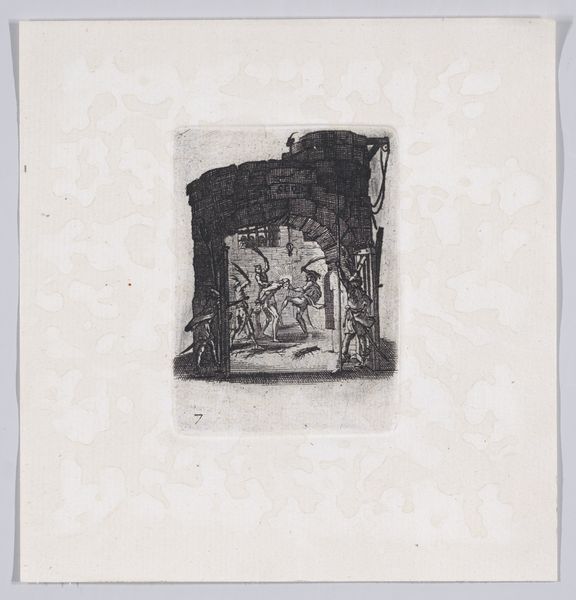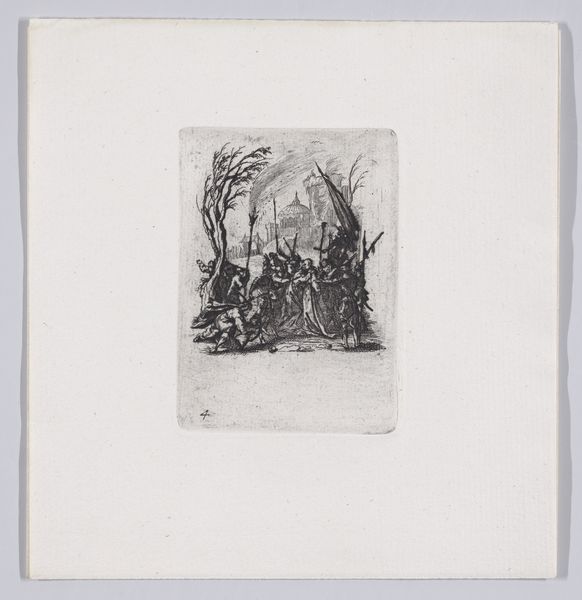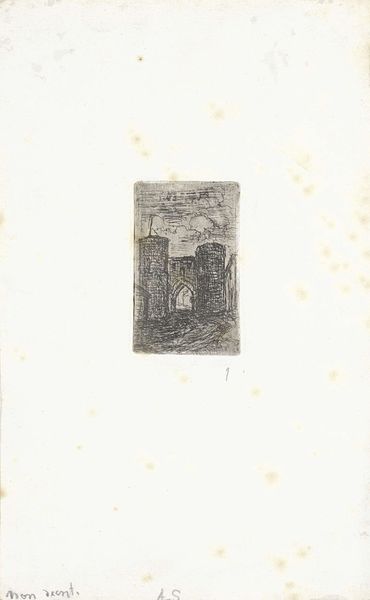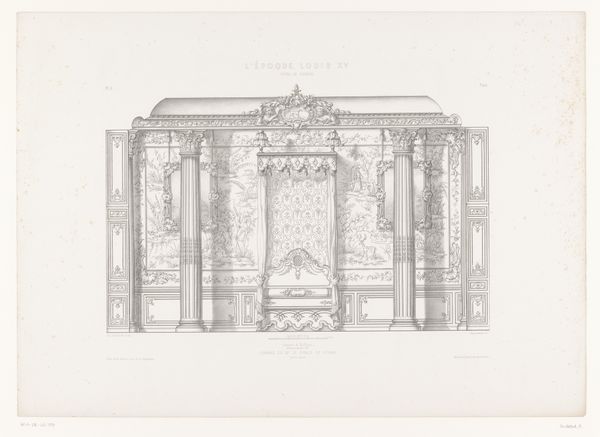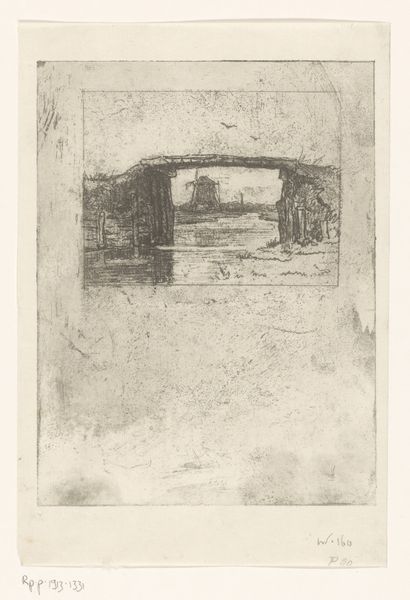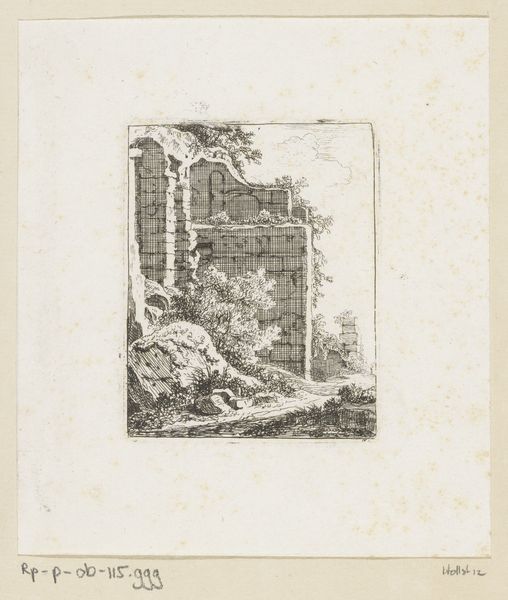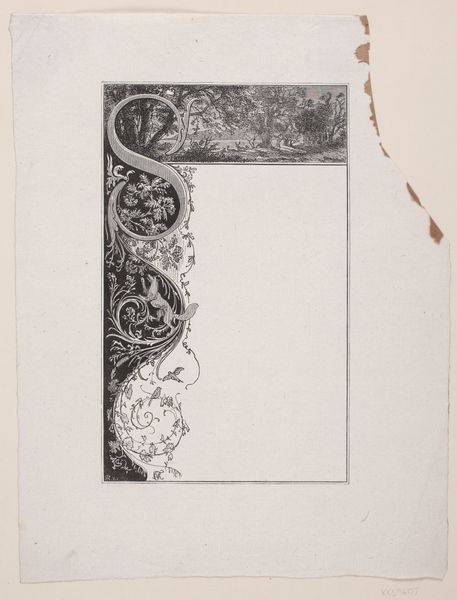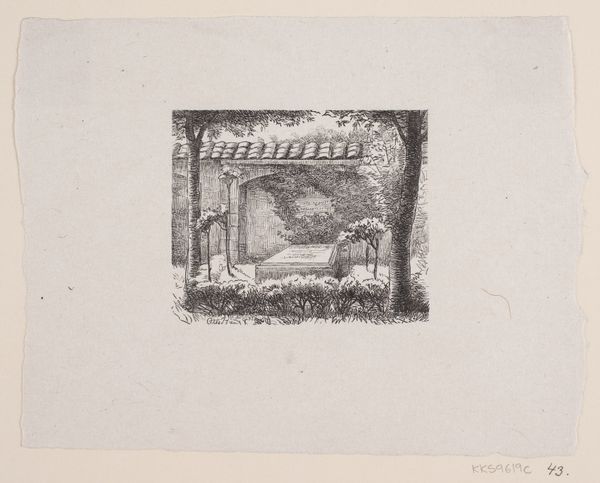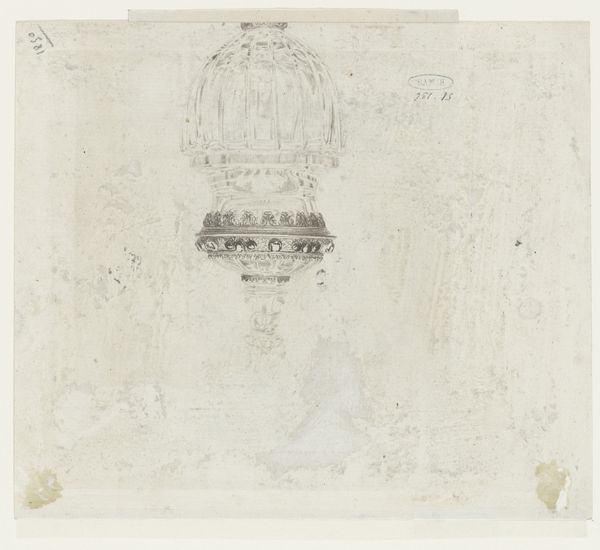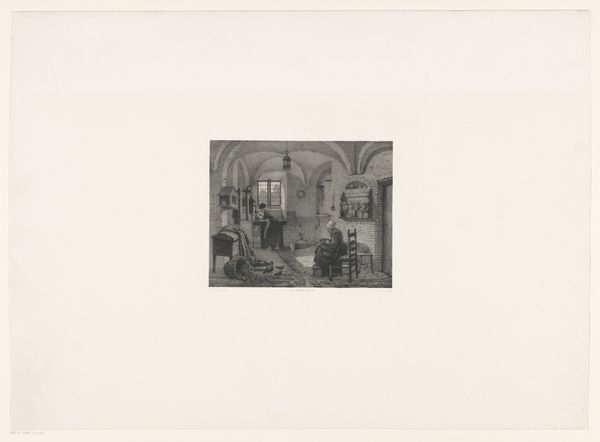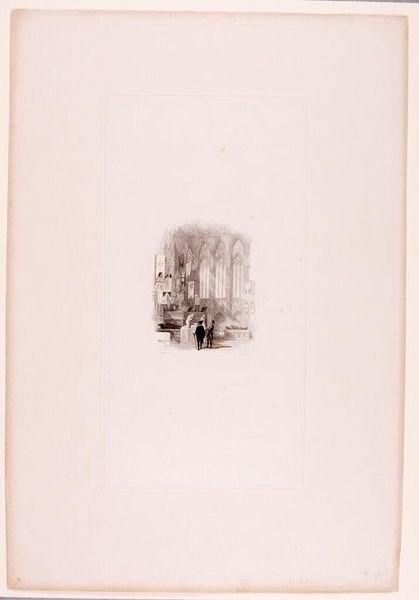
Reverse Copy of La Cène (The Last Supper), from La Petite Passion (The Little Passion) 1624 - 1700
0:00
0:00
drawing, print
#
photo of handprinted image
#
drawing
#
shape in negative space
#
negative space
#
pale palette
# print
#
old engraving style
#
limited contrast and shading
#
ink colored
#
watercolour illustration
#
remaining negative space
#
watercolor
Dimensions: Sheet: 5 7/16 x 5 3/16 in. (13.8 x 13.2 cm) Plate: 2 15/16 x 2 3/16 in. (7.5 x 5.6 cm)
Copyright: Public Domain
Editor: We are looking at "Reverse Copy of La Cène (The Last Supper), from La Petite Passion (The Little Passion)," a print dating from 1624 to 1700, now at the Met. Its monochrome palette and tiny scale are captivating. What visual elements stand out to you in this image? Curator: The architecture dominates. Observe the arch, framing the scene but also visibly crumbling. The perspective directs the viewer’s eye towards a vanishing point located behind Christ. Is it the implied volume interesting? It's achieved through rather simple linear perspective. Editor: Yes, the contrast between the ruined architecture and the radiance surrounding Christ is quite striking. Does the architecture's decay signify anything beyond visual interest? Curator: Perhaps, but more significantly, it creates depth. The artist masterfully uses line to construct spatial relationships and lead the viewer's gaze. The arrangement of the figures, clustered yet distinct, also contributes to this construction of space. Editor: The figures do seem very deliberately placed, almost staged. Curator: Precisely. Consider the artist’s manipulation of line, shadow and light. Note how the lines create texture and delineate form, even with a lack of color. And the limited shading emphasizes the figures without creating full illusion. Editor: So, the power of this piece lies primarily in its formal elements rather than overt symbolism. Curator: Exactly. The success of the artwork depends more on spatial illusion, strategic placement of figures and the arrangement of line and shape in light and shadow. It exemplifies artistic competence within a visually restrictive medium. Editor: I see the power of analyzing the lines, shapes, and perspective in constructing a narrative, thank you. Curator: And I’m glad to find a renewed sense of how those lines also generate depth.
Comments
No comments
Be the first to comment and join the conversation on the ultimate creative platform.
